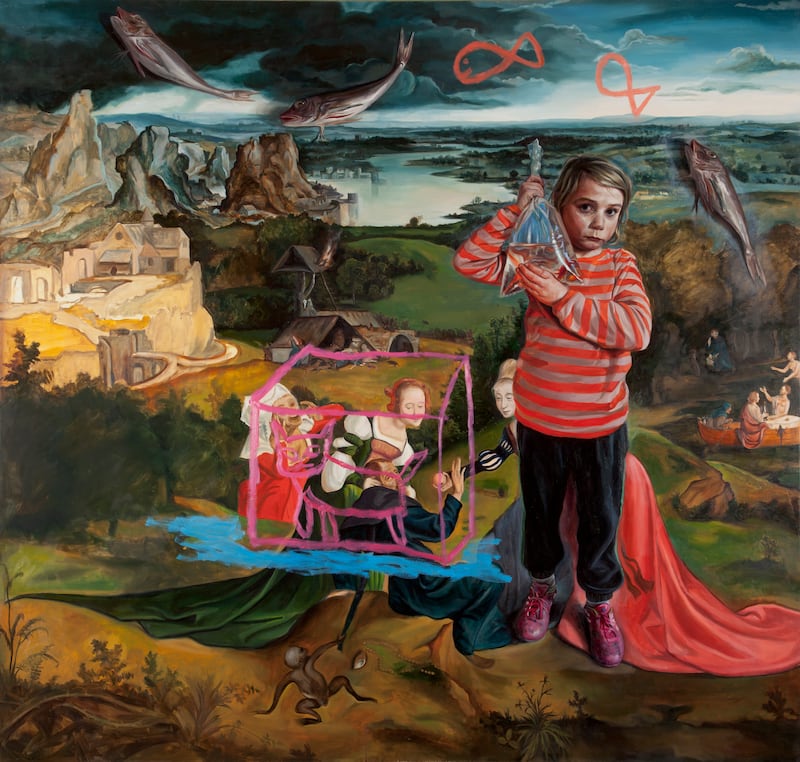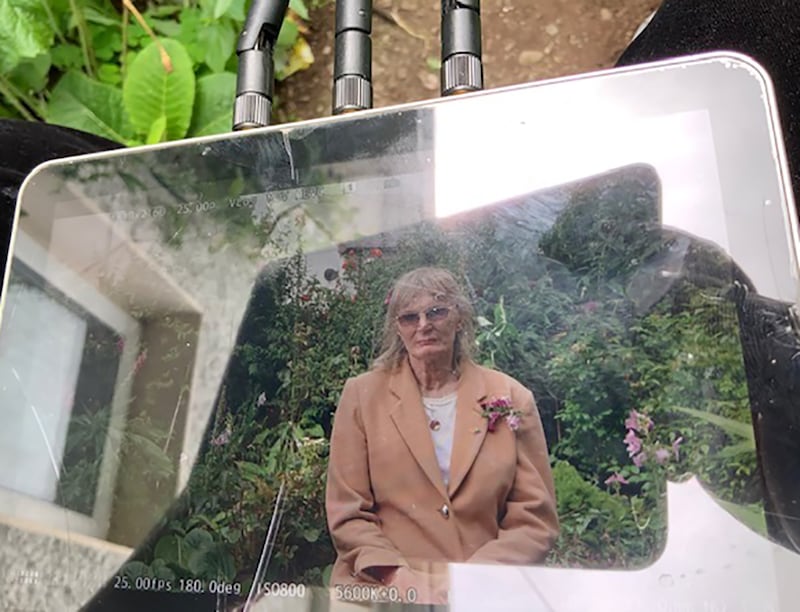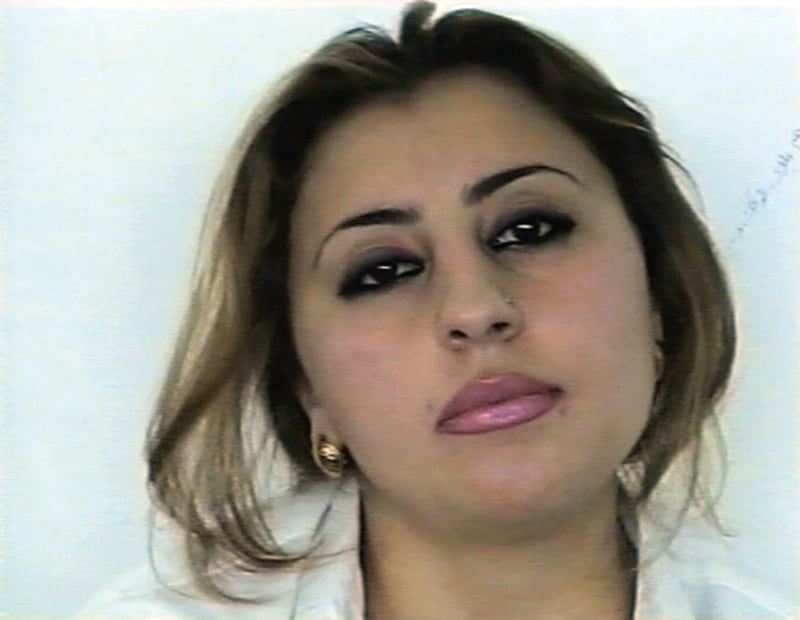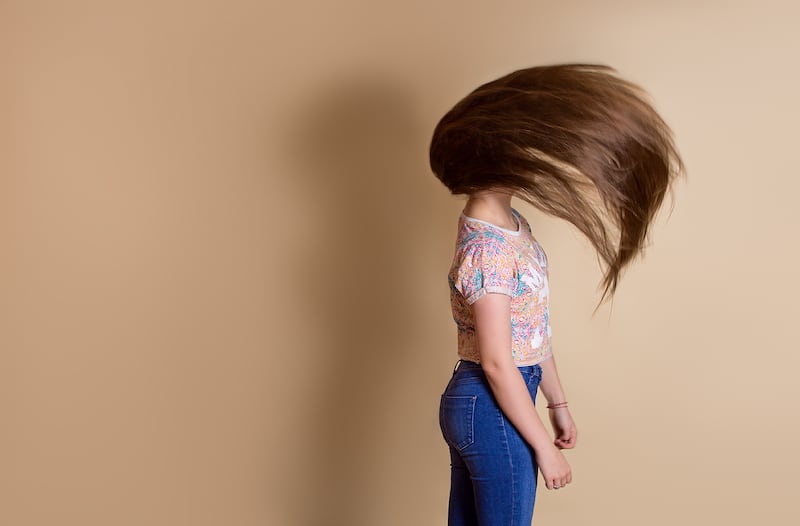“Historically, it’s the powerful and rich who get painted,” says Geraldine O’Neill. “Here it’s the future.” O’Neill is featured in The Model’s new exhibition, Portrait Lab, which explores one of art’s oldest subjects. Alongside Mick O’Dea, she has been commissioned to paint the portraits of 18 Sligo children who were chosen, according to the exhibition’s curator, Emer McGarry, to reflect the diversity of the next Sligo generation. The resulting portraits will take their place in The Model’s Niland Collection.

From Madrid’s Reina Sofia to Florence’s Uffizi, and from New York’s Met to our own National Gallery, the portrait collections of the world’s historic museums tend to tell the same stories of success. White men look down from canvasses contained within gilt frames. Their clothes and hair may change, but the expressions tend to stay the same. Apart from the occasional powerful queen, women are elegantly draped and passive, ornaments to the family line. What children there are tend to be those slightly scary marriage portraits, painted to pass around august halls, touting among prospective parents to affiance the under-fives, cementing future generations of inbreeding for the mutual benefit of the few.
Time can be quite a leveller. Wander those museum corridors now, and you’ll see visitors looking at the Goya, the Velázquez, the John Singer Sargent, and the John Lavery. The subjects themselves are frequently forgotten, their images living on through the fame of the artists. Cameras changed things, of course. So too did the social and artistic upheavals of the 20th and 21st centuries.
In Portrait Lab, as O’Neill points out, “it’s just Mick and myself that use ‘old’ technology.” Instead, find film, photography, and a screen print from Brian O’Doherty’s portrait of Marcel Duchamp – ultimately expressed as a lightbox showing an electrocardiogram (ECG) of Duchamp’s beating heart. The portrait was made in 1966, after O’Doherty had invited Duchamp to dinner. A qualified medical doctor, O’Doherty had borrowed an ECG machine, and persuaded Duchamp to allow himself to be hooked up. “It was the thrill of my life,” O’Doherty said, “to see Duchamp’s heart beating on the screen.” Looking at the work now, the endlessly repeating, leaping green line is an uncanny reminder of the eternal question: what really defines the essence of a person? Head or heart? Body or spirit?
READ MORE
Part of the fascination with the O’Doherty portrait is that Duchamp is famous. We can find ourselves looking for clues in the blipping green line, for something that might hint at the origin of the latter artist’s arguable genius. Something similar is going on with Amanda Dunsmore’s portrait of Dr Lydia Foy. The 18-minute film shows the Irish transgender activist simply standing in her garden, backgrounded by her beloved foxgloves. There is something mesmerising, almost meditative about viewing the piece – it’s as if, by simply being there, almost unmoving, you start to see beyond the skin and into her soul.



Even though time turns us all to dust and, as those Goyas in their gaudy frames show, even the most elevated can lose their names to history; looking at the portrait of someone un-famous is a surprisingly different experience. Phil Collins’s Baghdad Screentests is a series of videos of some of the inhabitants of Baghdad, made less than a year before the Iraq War began. Here, the images become more a portrait of time, representative of a generation who inevitably became lost in time through the onslaught of conflict.
Alongside the innovations of screens, painting persists. Programmes such as Sky Arts Portrait Artist of the Year have familiarised so many of us with the whole process of the genre. We see the difficulties of sitting still – on the model’s side – the taking of reference photographs, the blocking in of colour, the chat between artist and sitter to establish rapport and find character. And – thanks to the magic of time-lapse filming – faces emerge in ink, watercolour, gouache and oil. It was the perfection of oil painting that really enabled portrait painting to sing, according to a fascinating timeline that is part of Portrait Lab (see panel). And it was an oil painting, of Michael Davitt by William Orpen, held in the Niland collection and made in about 1900 that sowed the seeds for this exhibition.
“He’s from this part of the world,” says McGarry. “And then we also have a long term loan of a beautiful portrait of Jack Butler Yeats when he was eight years old. Seeing them hanging side by side brought a certain inspiration.” The inspiration took root, and realising that the only way that a portrait of an eight-year-old can be in an art collection for us to wonder at, 100 years later, is for someone to have gone about making it at the time, and keeping it safe thereafter; McGarry set about commissioning O’Neill and O’Dea for this project. “There’s a lovely line,” she says. “Orpen taught Sean Keating, who taught Carey Clarke, who in turn taught Mick and Geraldine.”
O’Dea smiles at the thought. “Orpen was taught by someone, who was taught by David – but does it matter?” In a way it does. Capturing time, as they do, portraits inevitably lead to thoughts about lineage and longevity, and it doesn’t have to be just for, and about the wealthy, powerful or famous. “I see so much in common with traditional music and traditional painting,” says O’Dea. “My cousin Martin Hayes composed a reel, and he’s called it Mick O’Dea’s reel. There’s my immortality.”
It’s easier painting famous people, he says, drawing from his residencies at the Kilkenny Arts Festival where he captured the likenesses of the artists, actors and performers who came to take part. “Performers give you a licence,” he says. “But children are different. Their faces are different from adults. There aren’t many lines and structures to bring you from an eye to a nostril. There’s less terrain.” They’re also often less adept at sitting still.
O’Dea’s portraits of Sligo’s next generation will be painted in a live action series at The Model, while O’Neill’s work is a longer process. Both artists have already spent time with their subjects and their families. “They’re amazing kids,” O’Neill says. “I feel like I’m custodian of their stories.” Her work will be completed later in 2023, when it will go on show as part of the second phase of the project, The Sunset Belongs to You. “I’m very protective of them. It’s so fleeting,” she says. “By the time I have these portraits finished, they’ll look like entirely different people. They’ll grow, blossom. And change.”
Portrait Lab, which is at the Model in Sligo until January 21st, 2023, features work by Phil Collins, Amanda Dunsmore, Clodagh Emoe, Marie Foley, Breda Mayock, Mick O’Dea, Brian O’Doherty, Geraldine O’Neill, Ugo Rondinone and Brian Teeling. Mick O’Dea’s live portrait sittings take place from November 1st to 6th. The sessions are free but ticketed; book on the Model website

Moments in Time: a brief and inexact history of portraits
- Chauvet Cave: France, c.30,000 BC Early artists used hands as stencils to mark their presence. “They would have been seen in flickering firelight,” says O’Neill. “It must have been almost cinematic.”
- Olmec heads: Gulf of Mexico, c.900 BC. These colossal squat heads wouldn’t look out of place in a contemporary gallery. Some critics have traced their influence through Velázquez to Goya to Fernando Botero.
- Fayyum portraits: Egypt, late BC/early AD. Incredibly lifelike portraits on wooden boards, attached to mummies from Roman Egypt and drawing on Greek painting traditions. Made in pigmented wax and egg tempera.
- Roman statues: such as the Equestrian Statue of Marchs Aurelius c160-180 AD. Showing an increasing naturalism as personality starts to play a part in portraiture.
- As Byzantine art rejected the depiction of people, and the medieval Gothic focused on religious subjects, we jump forward to the Renaissance for the next major batch of juicy portrait action.
- The Arnolfini Wedding: 1441. Jan Van Eyck’s famously ambiguous couple is credited with advancing the popularity of oil painting. Capturing the depth of complexions with a luminous softness – in the right hands – portraits never looked back.
- Albrecht Dürer (1471-1528) and Rembrandt van Rijn (1606-1669) were among those who spread the net, capturing the likenesses of more “ordinary” people for posterity.
- Following cameras – aka daguerreotypes – coming on the scene in 1839, things really opened up. From Vincent Van Gogh (1853 to 90), to Pablo Picasso (1881-1973) and Frida Kahlo (1907-1954) we leap off into Surrealism, Cubism and Expressionism. After that? Anything goes.













